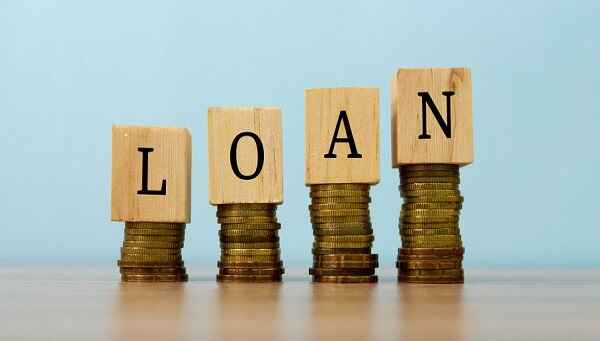A long-term loan is a type of financing where businesses, individuals, or governments borrow money for an extended period, typically 5 years to 30 years. These loans are commonly used for business expansion, home purchases, infrastructure projects, and large capital investments.
In India, banks like State Bank of India (SBI), HDFC Bank, ICICI Bank, and NBFCs like Bajaj Finserv offer long-term loans to businesses and individuals. They come with fixed or variable interest rates, scheduled repayments, and collateral requirements, making them an essential tool for financing large-scale projects.
While long-term loans provide financial stability, lower EMIs, and tax benefits, they also have high-interest costs, collateral risks, and lengthy approval processes.

In this article, we will explore the advantages and disadvantages of long-term loans to help businesses and individuals make informed borrowing decisions.
Quick Overview: Advantages & Disadvantages of Long-Term Loans
| Advantages | Disadvantages |
|---|---|
| Lower Monthly Installments (EMIs) Compared to Short-Term Loans | Higher Interest Payments Over the Loan Period |
| Helps Businesses Fund Expansion & Large Projects | Risk of Losing Collateral in Case of Default |
| Improves Creditworthiness & Financial Stability | Rigid Repayment Terms & Long Commitment Period |
| Tax Benefits on Interest Paid (For Businesses & Home Loans) | Lengthy Approval & Documentation Process |
| Better Cash Flow Management for Businesses | Market Interest Rate Fluctuations May Increase Costs |
| Provides Financial Security for Home & Asset Purchases | Early Repayment or Foreclosure Charges May Apply |
Advantages of Long-Term Loans
1. Lower Monthly Installments (EMIs) Compared to Short-Term Loans
Since long-term loans are spread over a longer repayment period, borrowers enjoy lower monthly EMIs, making repayment more manageable.
For example, a ₹50 lakh home loan for 20 years may have a monthly EMI of ₹40,000, whereas a 10-year loan would require a much higher EMI of around ₹70,000.
2. Helps Businesses Fund Expansion & Large Projects
Long-term loans provide large capital amounts, allowing businesses to:
- Expand operations & open new branches.
- Invest in infrastructure, technology, and machinery.
- Manage working capital efficiently.
For instance, Tata Motors used long-term loans to expand its electric vehicle (EV) segment, ensuring business growth without immediate financial stress.
3. Improves Creditworthiness & Financial Stability
Taking a long-term loan and repaying it consistently helps:
- Build a strong credit history.
- Improve CIBIL score for future borrowings.
- Attract better loan terms & lower interest rates.
For example, a business with a good credit track record can negotiate lower interest rates on future loans, reducing borrowing costs.
4. Tax Benefits on Interest Paid (For Businesses & Home Loans)
Borrowers can claim tax deductions on the interest paid on long-term loans under Indian tax laws:
- Home Loan Interest Deduction (Section 24b) – Up to ₹2 lakh per year.
- Business Loan Interest Deduction – Can be claimed as a business expense.
For example, an entrepreneur taking a ₹1 crore business loan can deduct interest costs from taxable income, reducing overall tax liability.
5. Better Cash Flow Management for Businesses
Businesses can use long-term loans to:
- Avoid sudden financial burdens.
- Allocate funds towards day-to-day operations.
- Maintain liquidity without affecting growth.
For example, a manufacturing company using a 15-year loan to purchase machinery can keep cash reserves for operational expenses.
6. Provides Financial Security for Home & Asset Purchases
Long-term loans help individuals and businesses:
- Buy homes without immediate full payment.
- Invest in assets that appreciate over time (real estate, commercial properties, etc.).
For example, buying a house with a home loan allows a family to own property while repaying in affordable EMIs instead of paying upfront.
Disadvantages of Long-Term Loans
1. Higher Interest Payments Over the Loan Period
Since long-term loans extend over 10-30 years, borrowers end up paying more interest compared to short-term loans.
For example, on a ₹50 lakh home loan for 20 years at 8% interest, total interest paid will be ₹50 lakh, making the total repayment ₹1 crore.
2. Risk of Losing Collateral in Case of Default
Most long-term loans require collateral (property, business assets, etc.). If borrowers fail to repay, lenders can seize assets.
For example, in case of loan default, banks can auction the borrower’s house or factory to recover outstanding dues.
3. Rigid Repayment Terms & Long Commitment Period
Long-term loans require consistent monthly repayments for years, reducing financial flexibility.
- Job loss or business downturns can create repayment difficulties.
- Failure to pay EMIs results in penalties & credit score damage.
For example, if a business takes a ₹5 crore loan for 20 years but faces losses in 5 years, it still has to continue repaying despite financial challenges.
4. Lengthy Approval & Documentation Process
Long-term loans involve:
- Extensive paperwork & credit evaluations.
- Property verification (for home & business loans).
- Bank scrutiny of financial records & income statements.
For example, a business loan applicant must submit income tax returns, audited financial statements, and business plans, delaying loan approval.
5. Market Interest Rate Fluctuations May Increase Costs
Most long-term loans come with floating interest rates, meaning:
- Rates may increase due to economic conditions.
- Borrowers may end up paying more over time.
For example, in 2022, RBI raised repo rates, leading to increased home loan EMIs, impacting borrowers.
6. Early Repayment or Foreclosure Charges May Apply
Some banks charge penalties for early repayment of long-term loans to compensate for lost interest earnings.
For example, a business trying to prepay a loan may have to pay a 2% foreclosure charge, increasing costs.
Who Should Consider a Long-Term Loan?
Best Suited For:
✔ Businesses looking for capital to expand operations.
✔ Homebuyers wanting affordable EMIs over a long period.
✔ Governments & large corporations funding infrastructure projects.
✔ Entrepreneurs needing financial stability for business growth.
Not Suitable For:
✘ Small businesses with unstable cash flow.
✘ Individuals who want quick repayment & less interest burden.
✘ Borrowers unwilling to pledge collateral.
✘ Businesses with short-term investment plans.
Conclusion: Is a Long-Term Loan a Good Financial Choice?
Long-term loans are an excellent option for businesses, homebuyers, and governments needing large capital with manageable EMIs. They provide financial stability, tax benefits, and growth opportunities.
However, they also come with high-interest costs, long commitments, and collateral risks. Borrowers must:
- Compare interest rates before choosing a lender.
- Ensure stable income sources for timely repayment.
- Consider prepayment options to reduce total interest costs.
For businesses planning large-scale expansion or individuals buying property, a long-term loan is a strategic financial tool—but careful planning is required.
Anantha Nageswaran is the chief editor and writer at TheBusinessBlaze.com. He specialises in business, finance, insurance, loan investment topics. With a strong background in business-finance and a passion for demystifying complex concepts, Anantha brings a unique perspective to his writing.

